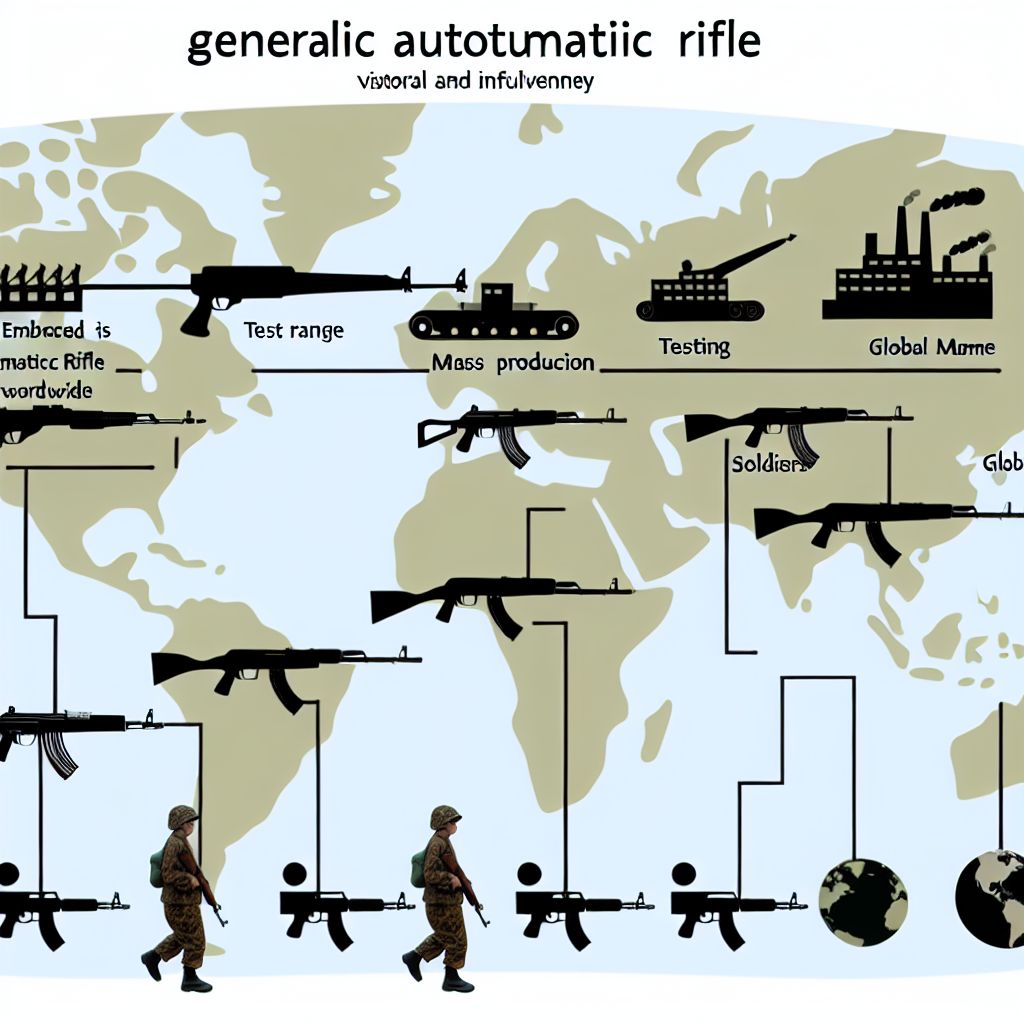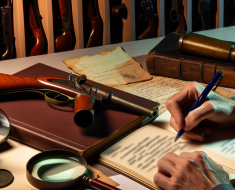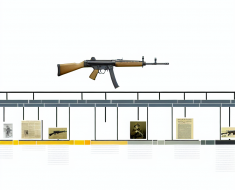The Story of the AK-47: History and Legacy

The AK-47, often regarded as the most iconic assault rifle in the world, has a history that intertwines with global conflicts, technological innovation, and political symbolism. Its design revolutionized infantry warfare, becoming a symbol of resistance and power across continents. This article explores the fascinating history of the AK-47, its development, global proliferation, and enduring legacy in modern warfare.
The Birth of a Revolutionary Weapon: Origins and Development
The story of the AK-47 begins in the aftermath of World War II when many nations sought to develop reliable, lightweight, and effective automatic weapons for their infantry forces. The Soviet Union was no exception. Mikhail Kalashnikov, a Soviet tank mechanic and self-taught firearms designer, created what would become the AK-47 (Avtomat Kalashnikova 1947) during this period.
Kalashnikov’s motivation stemmed from his experience on the battlefield during World War II. Wounded in combat, he understood firsthand the importance of having a reliable weapon. Starting work in 1945, Kalashnikov aimed to design an assault rifle that combined simplicity with durability.
- Design Objectives: The rifle had to be easy to manufacture using mass production techniques.
- Reliability: It needed to function reliably in harsh conditions such as mud, sand, and extreme temperatures.
- Firepower: The weapon was chambered for the intermediate 7.62×39mm cartridge, balancing range and recoil control.
The result was a rugged firearm featuring a gas-operated rotating bolt system—a mechanism inspired by earlier designs but simplified for ease of production. Officially adopted by the Soviet Armed Forces in 1949, the AK-47 quickly gained favor due to its performance characteristics.
Technical Features: What Makes the AK-47 Stand Out?
The technical brilliance of the AK-47 lies in its simplicity and robustness. Unlike many Western rifles that require precise maintenance and delicate parts, the AK-47 can endure rough treatment while maintaining functionality.
- Simplicity: The rifle consists of fewer parts than comparable weapons like the American M16. This makes it easier to disassemble and repair even by untrained soldiers.
- Durability: Its loose tolerances allow dirt and debris to pass through without jamming—an essential trait for battlefield conditions.
- Firepower: Firing at approximately 600 rounds per minute with effective accuracy up to 300 meters provides adequate firepower for infantry engagements.
- Manufacturing: Designed for stamped steel construction (though early models used milled receivers), making it cheap and fast to produce in large quantities.
This blend of features has contributed heavily to its reputation as one of the most dependable assault rifles ever created.
Global Proliferation: The Spread Across Continents
The AK-47’s widespread adoption is unparalleled among firearms. By some estimates, over 100 million AK variants have been produced worldwide—more than any other rifle in history. Its proliferation can be traced through several factors:
- Soviet Influence: During the Cold War era, the USSR supplied allies and client states with AK-47s as part of military aid programs. This included countries in Eastern Europe, Asia, Africa, and Latin America.
- Simplicity & Cost: The low manufacturing cost allowed both state actors and insurgent groups to acquire or produce versions locally under license or through illicit means.
- Cultural Symbolism: The rifle became a symbol of liberation movements worldwide—from African independence struggles to guerrilla groups across Southeast Asia and South America.
A notable example includes its role during the Vietnam War where Viet Cong forces relied heavily on Chinese-produced Type 56 rifles (a variant of the AK-47) against U.S. troops armed primarily with M16 rifles. Despite being less accurate at long range compared to its Western counterpart, its ruggedness gave insurgents a significant tactical advantage in jungle warfare conditions.
The AK-47 in Conflict: Case Studies Highlighting Impact
The influence of the AK-47 transcends technical specifications; it has shaped numerous conflicts throughout modern history. Here are some key examples illustrating its impact on warfare:
- Africa’s Liberation Wars: During decolonization movements across Africa from the 1950s onward, liberation fighters favored AK-type rifles due to their reliability under harsh environmental conditions where Western weapons often failed.
Countries like Angola’s MPLA (Popular Movement for the Liberation of Angola) used these rifles extensively during their fight against Portuguese colonial rule.
Even today, many African militaries retain variants derived from Soviet designs. - The Soviet-Afghan War (1979–1989): The Afghan Mujahideen employed captured Soviet weaponry including AK-47s against invading Soviet forces.
Despite facing advanced Soviet equipment including tanks and helicopters, guerrilla fighters utilized their knowledge of terrain combined with these reliable rifles to sustain prolonged resistance.
The conflict highlighted how widely distributed small arms could affect geopolitical outcomes. - The Middle East Conflicts: From




